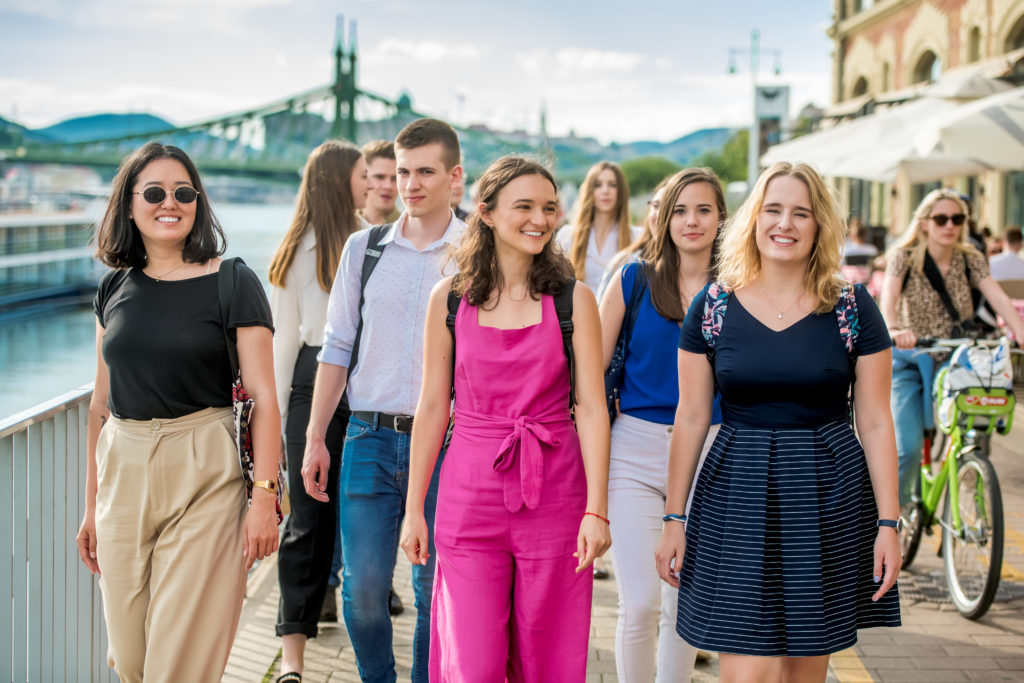Corvinus research: Hungarian young people long for luxury experiences instead of luxury objects

Melitta Kucsera and Ágnes Neulinger examined the luxury perception of the Hungarian Generation Z. The research analysed 120 randomly selected posts from the posts of the six Hungarian influencers with the largest number of followers, also belonging to Generation Z. The sample included ten randomly selected pictures of Körcsönyei Polly, Farkas Timi, Beniipowa, Kemp Zozo, Dezső Bence and Forstner Csenge each, from the second half of 2019 and 2020. In addition, young people of 16-18 and 23-25 years of age explained in mini focus groups what they considered as luxury.
According to Hungarian young people belonging to Generation Z, the characteristics of luxury include high price, excellent quality, exclusivity, unique nature, redundancy, aesthetic quality, design, speciality and customisation. As they explained, the motivation to buy luxury may be of several types: utility (excellency), exclusivity and stability of value of the product or service, the hedonism of the consumer (it would please them), the possibility of showing off (‘flexing’) and the rewarding of the consumer themselves. As to the representation of luxury, they mentioned examples mainly from the categories of travelling, private jets, fashion, beauty care, housing, boats, and food and drinks.
„In the eyes of young people, prestige products and luxury experiences mean instruments to confirm their own successes and to experience their own identities”, said Melitta Kucsera, the head of the research. ‘Based on the results, the interviewed young people in their teens and twenties focus on experiences: they long for experimental luxury, rather than personal luxury articles. Luxury items are short-lived, as the product wears out even in spite of its good quality, while the experience stays with you. However, this can be greatly improved by customisation, which establishes an additional emotional relation with the object’, she added.
Young people impersonate luxury in two ways: on the one hand, they described it as a middle-aged man, who is successful, wealthy, elegant, sophisticated, has a fashionable appearance and lives in America. In his free time, he plays golf, sails, has several luxury cars, and lives in a modern artistic luxury house in a rich district. On the other hand, young people described an opposite luxury character, too, who is younger, and whose privileged financial position is not really the result of their own success, there is less work behind it, and they represent luxury in a more easy-going and more obvious way. ‘All that is a reflection of the old and the new images of luxury in people, as the democratisation of the luxury market makes luxury brands easier to reach’, points out the author.
What kind of luxury is presented in the pictures of popular Insta influencers, and what kind of luxury do young people long for?
In the pictures of influencers, the luxury is presented in the form of exclusive free-time activities – sailing, flying with a helicopter, jet-skiing, seaside holidays in luxury hotels –, in the form of wearing certain accessories (e.g. Tommy Hilfiger cap, shawl and top with the name Guess, Louis Vuitton necklace and bag, Michael Kors handbag, white gold ring, crystal necklace jewellery), in cars (e.g. Audi, Mercedes, Alfa Romeo, Lamborghini) and in technical articles (GoPro device, home cinema and various Apple products). There were no gourmet topics in the posts.
The ultimate luxury for young people asked was the private jet, as well as properties abroad, penthouse in their own country, own cottage, a dream journey, a lift at home, a boat, and diamond jewels. The desired experiences included a flight with a military jet, swimming with dolphins, a space trip, hiring personal bodyguards, travelling around the world, and activities that increase the adrenalin level in an extreme way. Under Hungarian conditions, as Instagram influencers representing luxury lifestyle, young people mentioned the characters in the TV show titled ‘Feleségek luxuskivitelben’ (The Real Housewives of Hungary) – Vasvári Vivien, the Polgár family, Molnár Nini – and Vajna Tímea, Zimány Linda, Berki Krisztián, Dobó Ági, and the travelling blogger called Lola Pat-ridge. Among foreign Insta influencers, it is the Kardashian family, within that Kylie Jenner that came to the minds of the interviewees, as well as Dan Bilzerian poker player and Jake Paul boxer.
While the interviewed secondary school pupils deliberately follow influencers, and are happy to post even about material luxury goods, the age group of 23–25 years asked prefers natural photos about experiences. The latter raised the issue of credibility: they think that influencers are willing to create the image of false luxury, too, to their followers. As an example, the researcher mentions the case when several influencers hire a private jet at the Moscow airport, with full beauty and air hostess service, so that they could take professional pictures in a luxury environment as if they were flying alone, while the plane is only a scene for taking photos.
Generation Z means people born between 1995 and 2010, their number in the Hungarian society exceeded 1.6 million in 2021. The publication mentions: based on international trends, luxury brands are successful in reaching younger and younger consumers, in 2020 the ratio of Generation Z on the global market of personal luxury items was 13 per cent. So, people in their twenties could become a dynamically growing customer base for such articles within a few years’ time, and the older generations, which presently represent a high ratio, will be less significant. The research conducted at the Corvinus University of Budapest was published in the 4th edition of the Marketing és Menedzsment (Marketing and Management) journal in 2021.